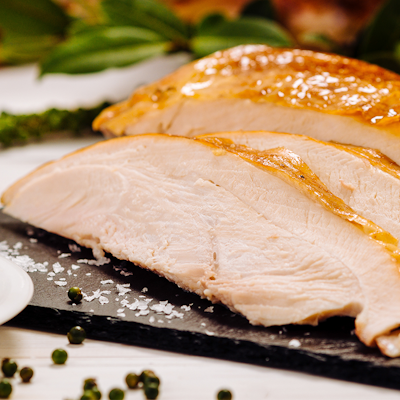All About Hidden Allergens
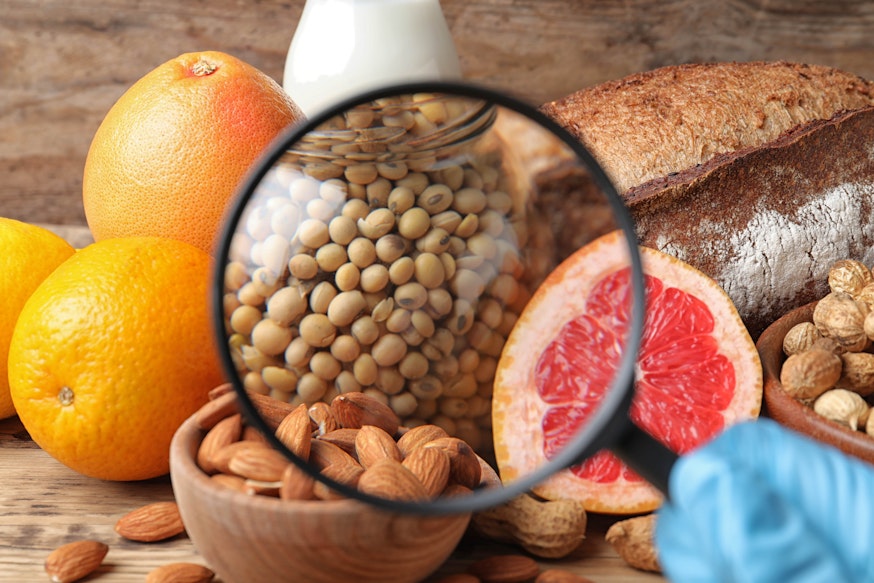
The rise in allergy sufferers is an increasingly important national issue – for the foodservice industry and beyond. And although we’re getting better at knowing which foods are potential allergy triggers, there are still many menu items and everyday products containing allergens that you simply wouldn’t expect.
So we decided to do a deep dive into where these hidden allergens might be lurking…
Top tip: If you’re an allergy sufferer you should always read the label, no matter how seemingly harmless the product might be.
What are the 14 Allergens?
The 14 Major Food Allergens recognised by law are Celery, Cereals containing Gluten, Crustaceans, Eggs, Fish, Lupin, Milk, Molluscs, Mustard, Nuts (Tree Nuts), Peanuts, Sesame, Soya and Sulphites (Sulphur Dioxide).
If you want to know the obvious places you might find them you can visit our 14 Major Allergens page here.
And these are the unexpected places you might find these allergens hidden…
Celery
Celery root contains more of the allergen than the stalk, but it’s the seeds that have the highest allergen content of all. Even the dried celery can be a problem for those with a sensitivity to raw celery.
The big issue with celery is that both celery and celery salt are used in many, many recipes to enhance flavour, but it’s almost never listed as an ingredient on a menu. So if you do have a celery allergy you should always check with a server, or whoever made the dish.
Here are some of the other places you might find celery hidden:
- Spice mixes
- Ready meals
- Stock cubes
- Sandwiches that have been pre-prepared
- Flavoured crisps
- Spice mixtures
- Marmite
- Batter for frozen foods
- Cured bacon (celery juice is sometimes used in its preparation)
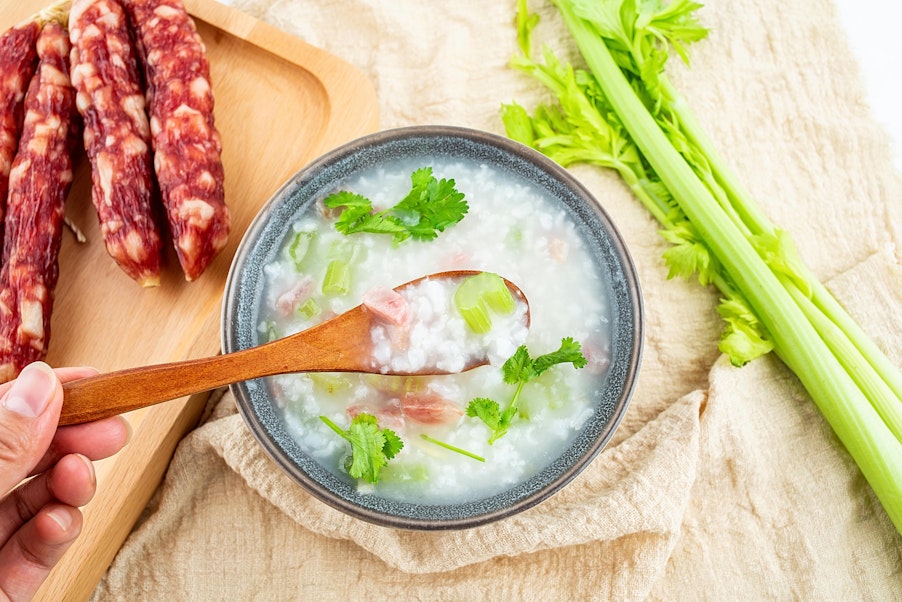
Cereals containing Gluten
People who suffer from a gluten allergy are often confused with those who suffer from Coeliac Disease, and you can learn more about the similarities and difference of the 2 here. But both should think twice before ordering scrambled eggs – many brunch and breakfast spots have been known to add pancake batter to their eggs to make them so fluffy and appealing (pancake mix includes wheat flour).
Here are some of the other places you might find Cereals containing Gluten hidden:
- Ground spices
- Certain blue/veined cheeses
- Chips are sometimes fried in a batter containing wheat flour and/or come into contact with flour via cross-contamination from fryers
- Salt and vinegar crisps – vinegar is made using malt (a cereal grain)
- Bouillon cubes
- Broths and stocks
- Salad dressings (look out for vinaigrettes)
- Chewing gum
- Mustard
- Mayonnaise
- Roasted nuts
- Vodka
- Ready-made pasta sauces
- Lagers, stouts and IPAs
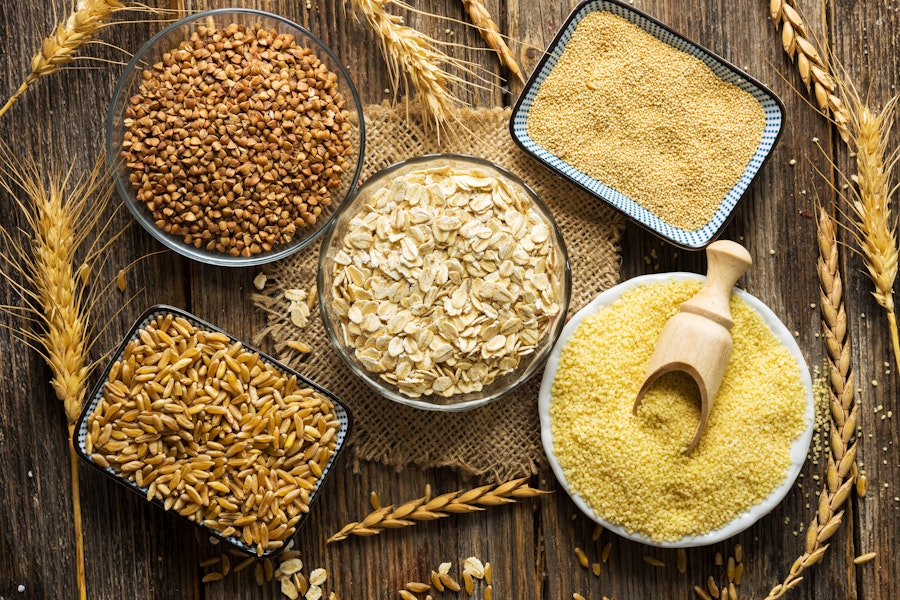
Crustaceans
People with a Crustacean allergy are allergic to barnacles, crabs, crawfish (crawdad, crayfish), krill, lobster (langouste, langoustine, scampi, tomalley), prawns and shrimp. The good news is that crustaceans are not often hidden, but they are a common ingredient in Asian cooking and should be looked out for when partaking in that cuisine.
Here are some of the other places you might find Crustaceans hidden:
- Bouillabaisse
- Fish Stock (in addition to fish, it often includes the shells of shrimp)
- Nutritional supplements
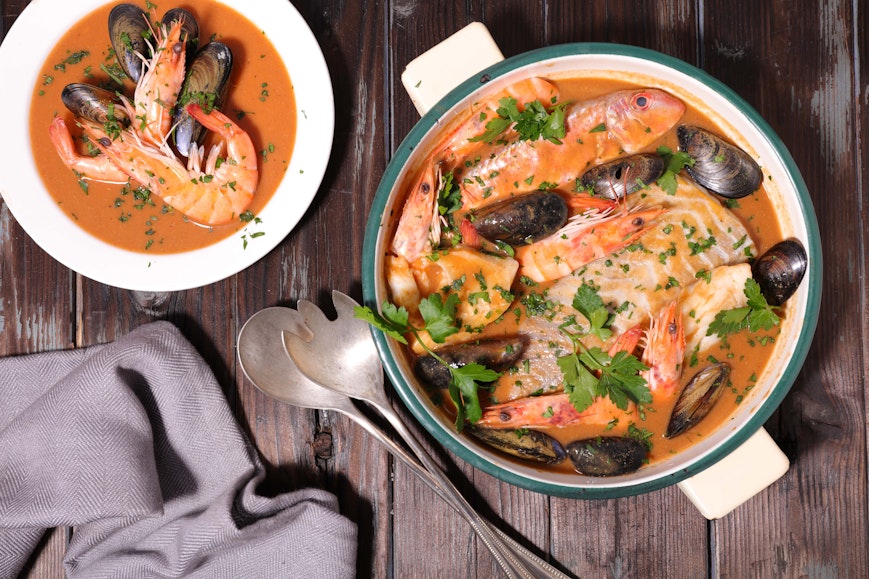
Egg
People who are allergic to eggs are typically more affected by the whites than the yolk, but it’s best to avoid both as they can each trigger an allergic reaction.
Egg is often used as a binder or emulsifier in recipes or food products, and is sometimes labelled under one its other names. You can find out more about that on our Egg Allergy Cheat Sheet here.
Here are some of the other places you might find eggs hidden:
- Artificial crab meat (Surimi) sometimes contains egg white
- Pasta (predominantly fresh pasta, but always check the label of dried pasta to be sure)
- Marshmallows
- Baked pretzels may be glazed with egg
- Bagels may be glazed with egg
- Pies may be glazed or brushed with egg
- Protein Shakes can either include egg white powder outright, or as part of the protein powder
- Artificial flavorings
- Lollipops
- Wine – sometimes egg is used in the wine-making process
- Soaps and shampoos

Fish
The main things that people with a fish allergy need to look out for are sauces. Sauces frequently have a fish base – even if they don’t taste of fish.
Here are some of the other places you might find Fish hidden:
- Tomato sauces can include anchovies in their base
- Worcestershire sauce
- Barbecue sauce
- Caesar salad traditionally includes anchovies in the dressing
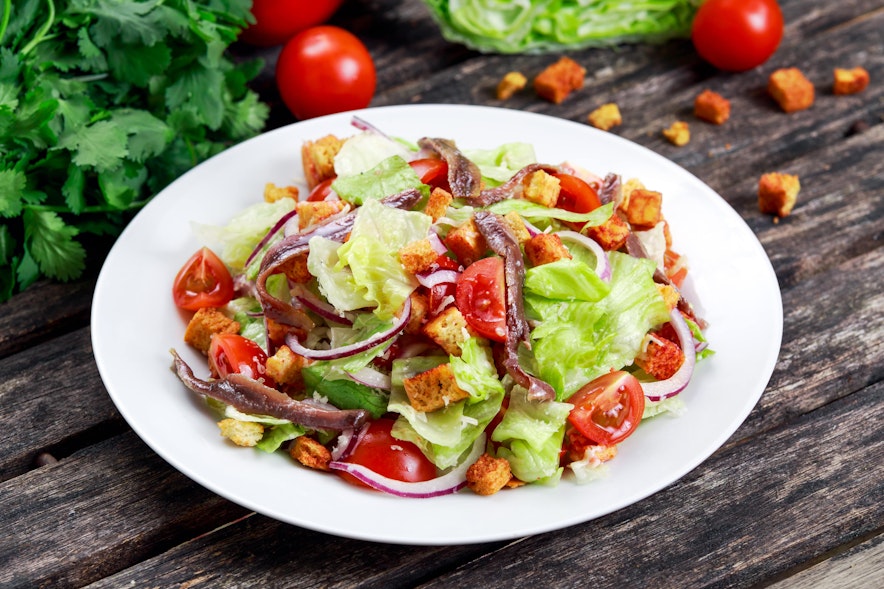
Lupin
Lupin is another allergen that is relatively unknown – and indeed, the addition of lupin to wheat flour has only been allowed in the UK and other European countries like France since the late 1990s. It’s widely used in bread, pasta, biscuits, pasta and other baked goods. Lupin beans are also sold in jars, pickled in brine, though it is more commonly ground and used as an additive to wheat flour.
Here are some of the other places you might find Lupin hidden:
- Chicken bouillon
- Chicken soup
- Animal-free milk
- Meat replacements
- Cookies

Milk
Those with a milk allergy should be wary of drinks in the lactose-free market. These beverages are milk, just with the lactose enzyme removed, and still contain milk protein.
Here are some of the other places you might find milk hidden:
- Canned tuna (some brands contain a milk protein called casein)
- Crisps that are flavoured (as opposed to just salted or made with natural ingredients)
- Chewing gum
- Some margarines contain skimmed milk powder
- Hot dogs
- Pâtés made from animal liver (beef or chicken for example) are sometimes soaked in milk to remove blood prior to cooking, seasoning and pureeing.
- Steak – specifically, steak served in a restaurant. Steak is sometimes cooked in or served glazed with butter so clarification should be made at the ordering stage.
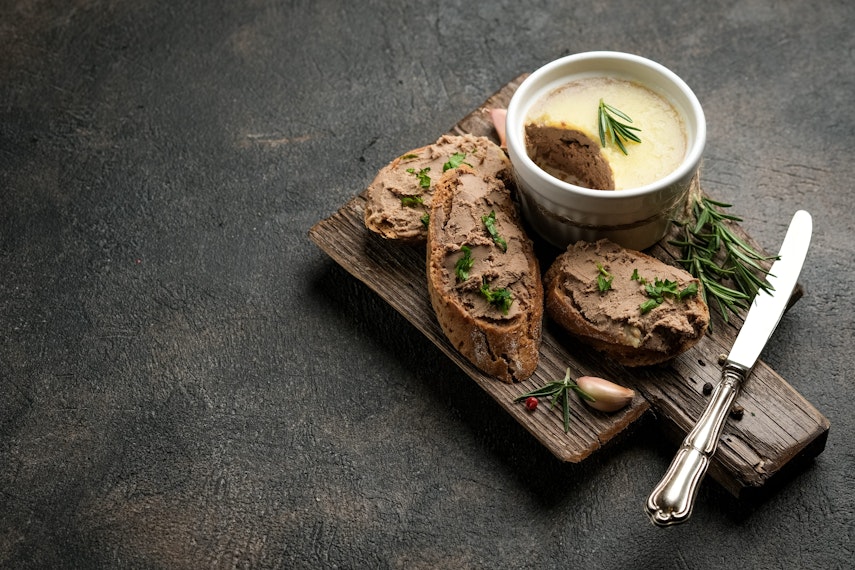
Molluscs
People who have a Mollusc allergy can’t eat clams, mussels, cockles, octopus, oysters and squid. This includes fried calamari (a popular starter on many menus) and scallops.
Here are some of the other places you might find Molluscs hidden:
- Sauces – particularly sauces with an oyster base.
- L’escargot (snails are a mollusc)
- Fish stock
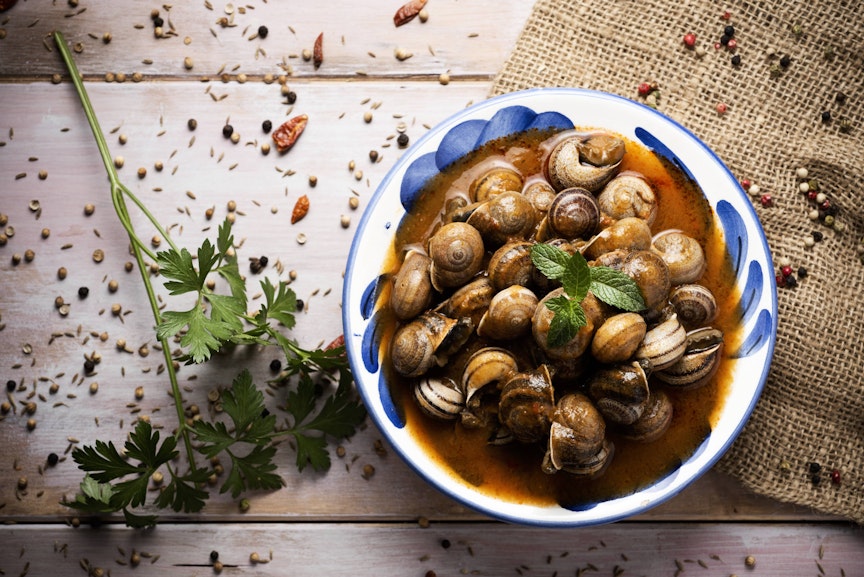
Mustard
The proteins in mustard that instigate allergic reactions are heat-resistant and sufferers will be affected by mustard in heated or processed foods. This is important because mustard is commonly used as a flavouring agent in the cuisines of countries such as India and Russia, where it is often found in stews and curries.
Here are some of the other places you might find Mustard hidden:
- Sauces (including barbecue sauce, piccalilli and ketchup/tomato sauce)
- Salad dressings
- Spice mixes
- Gravy
- Sausages
- Hamburger patties
- Mayonnaise
- Salad cream
- Soups
- Fish paste
- Processed meats
- Pickles
- Pizza
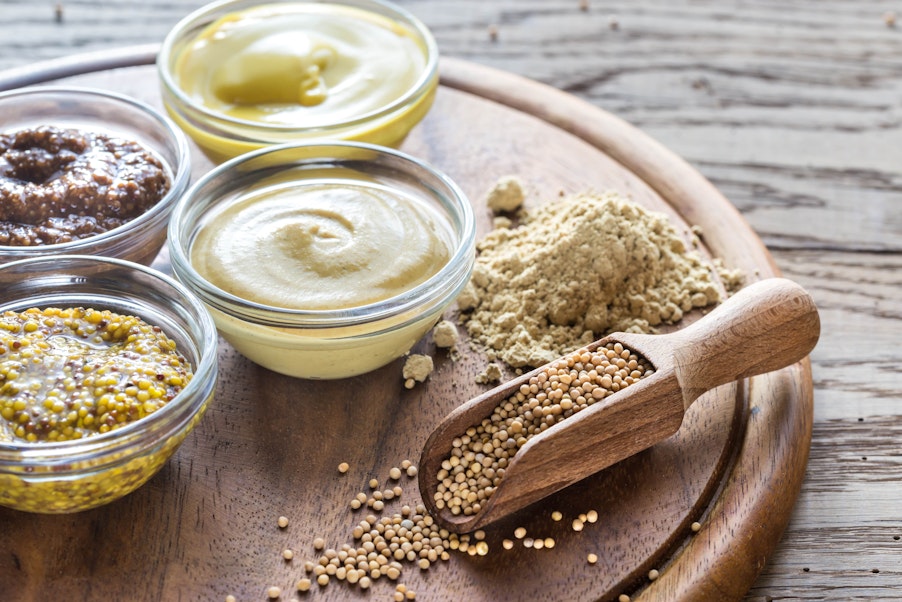
Nuts (Tree Nuts)
Tree nuts are all kinds of nuts that grow on trees – almonds, brazil nuts, cashews, chestnuts, filberts, hazelnuts, hickory nuts, macadamia nuts, pecans, pine nuts, pistachios and walnuts.
Tiger nuts, despite their nutty flavour, are not actually a nut and are perfectly safe for those with a tree nut allergy to eat (find out more here. However pink peppercorns should be avoided – they’re known to cause allergic reactions in those with an allergy to cashews.
Here are some of the other places you might find tree nuts hidden:
- Soaps and shampoos
- Crackers
- Chocolate
- Energy bars
- Flavoured and speciality coffee
- Frozen puddings and desserts
- Sauces and marinades (including barbeque sauce, hot sauce, pesto, gravy, and mole sauce)
- Mortadella, an Italian ham made with pistachios
- Pad thai
- Curry sauce
- Salad dressing
- Veggie burgers
- Dairy-free cheeses are mostly made with the likes of almonds or cashews
- Ice cream can contain traces of nuts via cross-contamination of ice cream scoops, even if the ice cream flavour itself does not contain nuts
- Gin (Bombay Sapphire, for example, is flavoured with almonds)
- Vodka can sometimes contain tree nut traces
- Brown ales may contain macadamia or walnuts
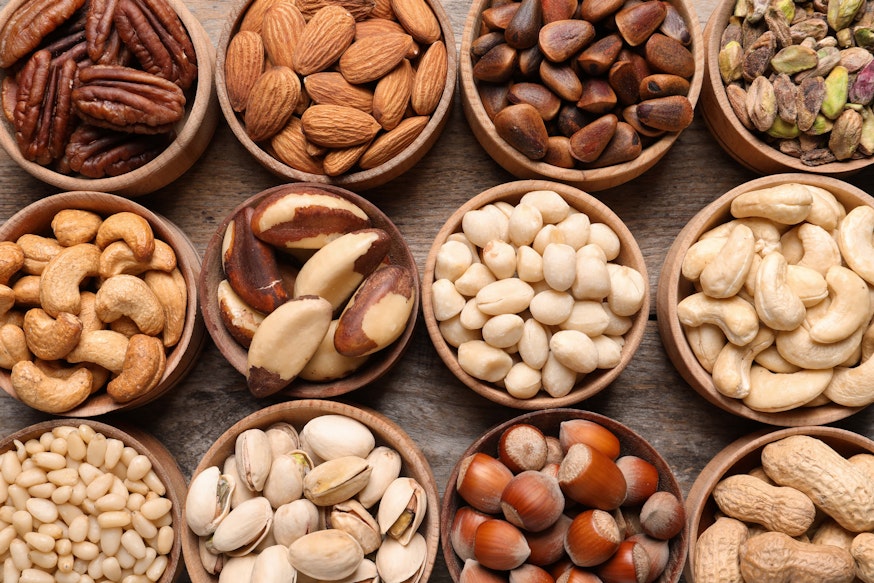
Peanuts
People who suffer from a peanut allergy will know that you can find peanuts in just about anything, so you must always be on the alert. Peanuts or peanut butter are sometimes used as thickeners in recipes, especially those that are vegan and vegetarian.
Peanut oil is also used for frying and is the go-to for many restaurants, most famously the burger chain Five Guys.
Here are some of the other places you might find peanuts hidden:
- Chilli
- Soup
- Soaps and shampoos
- Crackers
- Chocolate
- Energy bars
- Flavoured and speciality coffee
- Frozen puddings and desserts
- Veggie burgers
- Curry sauce
- Salad dressing
- Sauces and marinades (including barbeque sauce, hot sauce, pesto, gravy, and mole sauce)
- Indian Food
- Ice cream can contain traces of peanuts via cross-contamination of ice cream scoops, even if the ice cream flavour itself does not contain peanuts
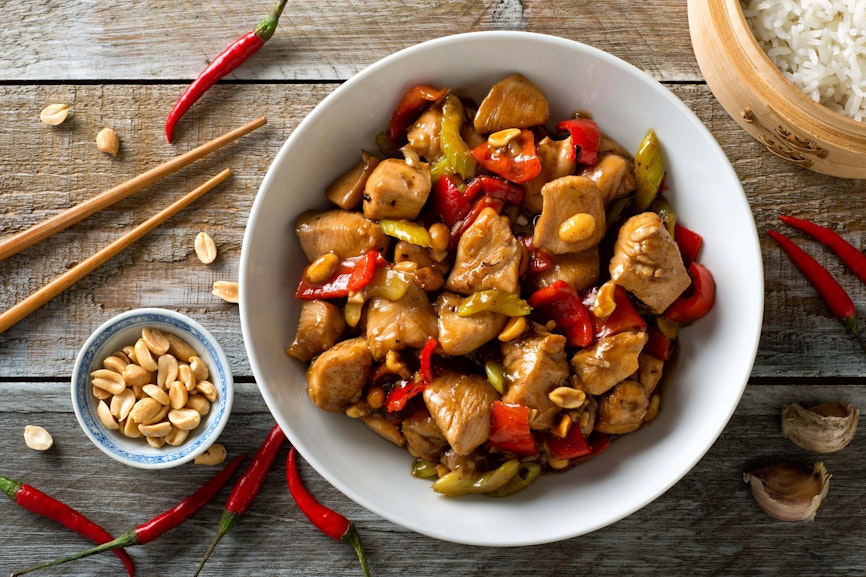
Sesame
Sesame is a fairly uncommon allergy, but a high profile one thanks to the case that led to Natasha’s Law – when teenager Natasha Ednan-Laperouse died after suffering an allergic reaction to a Pret a Manger baguette that was not labelled as containing sesame. Bread is the main place that sesame – particularly sesame seeds, can be found. Sesame oil is also a favoured ingredient in Asian cuisine.
Here are some of the other places you might find Sesame hidden:
- Cereals (such as granola and muesli)
- Melba toast
- Crackers
- Hummus
- Salads
- Soups
- Noodles
- Shish kebabs
- Chutney
- Sauces and marinades
- Stews
- Stir frys
- Margarine
- Processed meats
- Risotto
- Pretzels (as a topping)
- Rice cakes
- Tahini
- Vegetarian burgers
- Cosmetics and soaps
- Sushi
- Baba ganoush
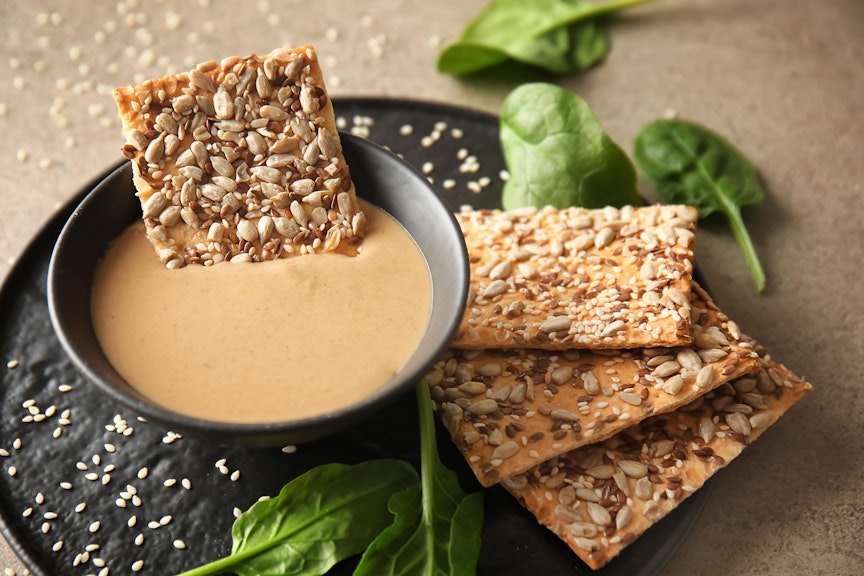
Soya
Vegans and vegetarians should take note – soya is one of the predominant ingredients in meat substitutes so anyone with a soya allergy should be extra careful when looking into those dietary options. Soy protein is also commonly used as a flavouring, and listed as such on packaging.
Here are some of the other places you might find Soya hidden:
- Edamame beans
- Miso
- Tamari
- Bread crumbs
- Cereals and crackers
- Breaded foods
- Infant formula and formula
- Nutrition supplements for toddlers and children
- Meal replacements
- Tempeh
- Textured vegetable protein
- Tofu
- Canned broth and soup
- Canned tuna and meat
- High-protein energy bars
- Low-fat peanut butter
- Vegetable oil
- Chicken broth
- Chocolate
- Hamburger meat with soy protein fillers
- Margarine
- Mayonnaise
- Sausages and hot dogs made with soy protein fillers
- Smoothies
- Bean curd (produced by taking dried soybeans, cooking them to get their milk and then curdling it)
- Eggs (chicken feed often contains soy)
- Lip balm
- Soaps and shampoos
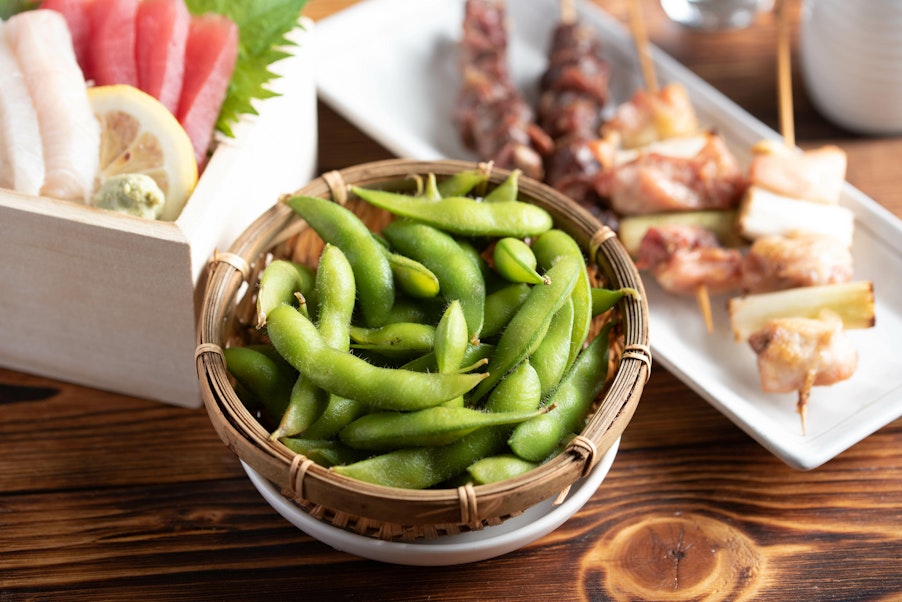
Sulphites
Most people aren’t familiar with sulphites, so anything that contains them comes as something of a surprise, but sulphites have been used as food preserves, additives and flavour enhancers for centuries. They are also naturally occurring in several fermented beverages and wines.
Here are some of the other places you might find Sulphites hidden:
- Beer
- Non-alcoholic beer and cider
- Wine
- Vinegar
- White and red wine vinegar
- Baked goods with dried fruit
- Canned/frozen fruits
- Cereal
- Bottled lemon and lime juices
- Condiments (including horseradish, ketchup, mustard, pickles, relish and sauerkraut) Dehydrated fish
- Noodle and rice mixes
- Soy products
- Dried fruits (but not including dark raisins and prunes)
- Maraschino cherries
- Grape juice
- Pickled cocktail onions
- Molasses

Extra Note: Vegan Products
Be careful with foods labelled as vegan or vegetarian. “Vegan” is not a legally defined term, so if you have an allergy to Milk, Eggs, Fish, Crustaceans or Molluscs, you should read labels for free-from or vegan food very carefully. For more guidance and clarification, check the Vegan Society’s guidance on ‘may contain’ here.


